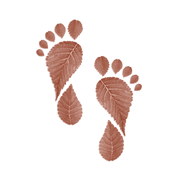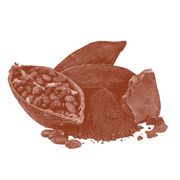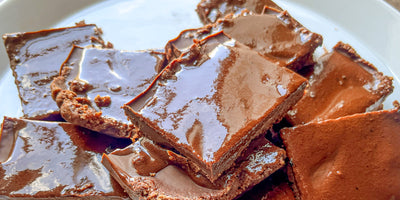If you’re like most chocolate lovers, the decadent snack doesn’t last long around your house. Why would you ever want to store chocolate and not eat it all right away? As unfathomable as the thought of storing chocolate might be, you might have the need to do so if you just stocked up on all your Wild West favorites, or you just want to eat a small portion at a time.
How long does chocolate last:
Chocolate has a relatively long shelf life. Depending on the type of chocolate, the typical shelf life is around 6-12 months.
Due to its higher cocoa content and lower moisture, dark chocolate has the longest shelf life, typically lasting 1.5 to 2 years when stored properly. Milk chocolate, with its higher milk and sugar content, has a shorter shelf life than dark chocolate, generally lasting about 6 months to a year.
All of Wild West chocolate bars have a “best if used by” date of one year from production. This is the time period during which we’re confident that the flavor notes you’ll taste in our bars will be as close as possible to when the bar was first tempered. That said, the flavors in our bars evolve over time, and some chocolate even improves with age.
But a bar can stay "fresh" for much longer than its shelf life. If you take care to store it under the right conditions, chocolate can last for years. In the interest of having the best chocolate-tasting experience days, months, or years from now, we are sharing some simple tips on how to properly store chocolate — it can make a significant difference in the chocolate's taste and texture. Avoid Temperature Fluctuations and Fat Bloom
Avoid Temperature Fluctuations and Fat Bloom
Avoiding sudden changes in temperature is key to preserving chocolate. When chocolate melts and then solidifies again, it can develop a condition called "fat bloom". This is where cocoa butter separates from the other ingredients and rises to the surface, creating white streaks or spots and dullness. To avoid this, it's crucial to keep chocolate in a stable temperature environment, away from any temperature fluctuations. If the chocolate has bloomed, it's still safe to eat but may have a less appealing appearance. So, keep your chocolate cool (but not too cool—more on that next).
Should you keep chocolate in the fridge?
While it might be tempting to store chocolate in the refrigerator, ideally, you shouldn't. You may think that keeping chocolate in the refrigerator prevents it from melting, however, doing so may actually produce unwanted moisture and condensation on the bar which causes sugar blooming.
Here's why:
-
Moisture and Sugar Bloom:
The fridge's humidity can cause moisture to condense on the chocolate, leading to "sugar bloom," where sugar crystals rise to the surface and make the chocolate look and feel grainy. Since fridges tend to be on the humid side, refrigeration can increase the chances of this occurring. While it’s unsightly, chocolate that has developed sugar bloom is technically still edible. You can repair the bloom by scraping it off, or by melting the chocolate and then allowing it to cool.
-
Flavor Absorption:
Chocolate is highly absorbent and can easily pick up odors from other foods in the fridge, potentially altering its flavor.
-
Texture Changes:
Refrigerating chocolate can make it hard and brittle, which can be undesirable.
Alternative solutions: Consider using a wine cooler set to 50°F, which provides a controlled environment without the high humidity of a fridge.
What about freezing chocolate?
Freezing chocolate can extend the shelf life of chocolate by 50% or more.
How to freeze chocolate:
-
Wrap the chocolate tightly in plastic wrap, freezer paper, or put it in an airtight container
-
Place the wrapped chocolate in a heavy-duty plastic freezer bag
-
Seal the bag tightly
Going from room temperature to the freezer can cause temperature shock and affect the taste and texture, so first place the chocolate in the fridge for 24 hours. Then, you can move it to the freezer. When it’s time to thaw, do this in reverse order—move the chocolate from the freezer to the fridge for 24 hours, and then to the counter or pantry so it can return to room temperature.
Ideal Storage Conditions
Store in a Cool, Dry Place
Chocolate should always be stored in a slightly cool, dry, dark place such as a cupboard or pantry. In general, it's best to keep it fully wrapped and away from direct sunlight, heat and moisture. Using an airtight container is one of the best ways maintain the premium quality and flavor of your chocolate.
 Image: modernhoney.com
Image: modernhoney.com
Our Master Chocolatier, Guy Debbas, says the most optimal temperature for storing chocolate is in the range of 65 and 68 degrees Fahrenheit, but anywhere between 60°F-70°F should be sufficient so long as the temperature remains consistent, with less than 50 percent humidity. These conditions enable the cocoa butter and cocoa solids to remain stable.
Wrap or Seal Properly
If the chocolate you're storing isn't in an airtight container, it's crucial to wrap it properly. Wrapping chocolate in plastic wrap or aluminum foil can help protect it from exposure to air and humidity. You can also use a resealable plastic bag, removing as much air as possible before sealing it. If you're storing chocolate with nuts or dried fruits, it's essential to wrap them separately to avoid moisture transfer.
Keep Away from Items with Strong Odors
Chocolate can absorb odors such as those from onions, garlic, coffee or other pungent foods and spices like a sponge. So make sure your storage area is free from strong-smelling items.
Once Opened, Consume Quickly
Once you've started eating a chocolate bar, our experts agree that the sooner you finish it, the better.
By following these simple tips, you can keep your chocolate fresh and delicious for as long as possible.
Here at WW, we love answering questions from our chocolate-loving customers! Feel free to email howdy@wildwestchocolate.com!
 Bars
Bars
 Bear Claws
Bear Claws
 Merch
Merch
 Variety Packs
Variety Packs
 Shop All
Shop All
 Our Story
Our Story
 Sustainability
Sustainability
 Ingredients & Certifications
Ingredients & Certifications
 Artist Collaborations
Artist Collaborations
 FAQs
FAQs







